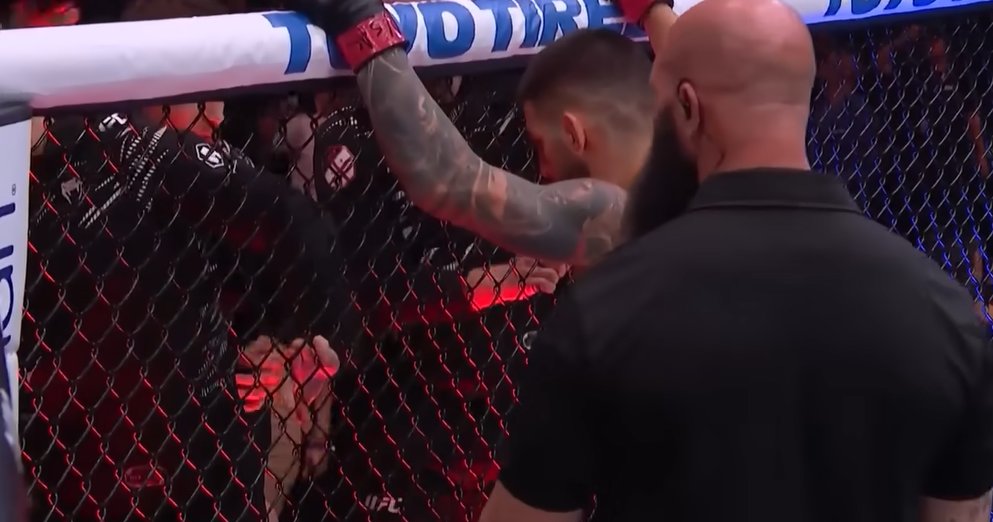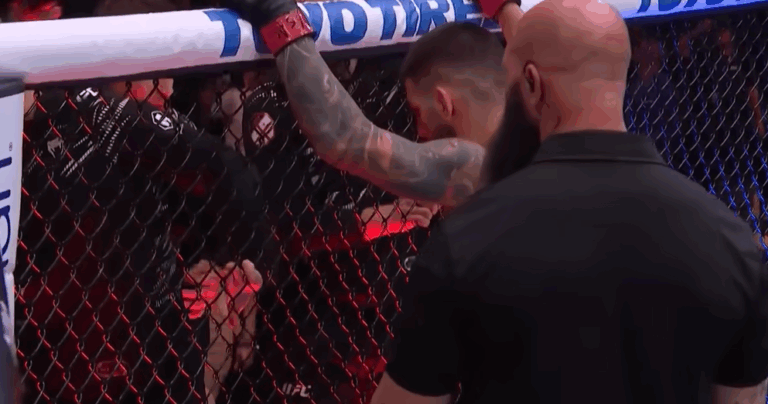Ilia Topuria’s transition from featherweight to lightweight was motivated by self-preservation and wasn’t just a tactical change. He dominated at 145 pounds, but eventually the brutal weight cuts took away from the excitement of competition. Topuria, who weighs 155 pounds, has maintained his perfect record while also significantly enhancing his performance, self-esteem, and general well-being.
Reducing to featherweight required losing almost thirty-five pounds. It was a physically and emotionally exhausting process. The pressure got so bad at times that he openly acknowledged that he almost hated the sport. The toll that such cuts take is reflected in his remarks that he feels mentally exhausted prior to fights. His acknowledgement that no title, wealth, or rival could motivate him to keep making such drastic cuts was especially telling. This degree of openness is extremely uncommon and profoundly meaningful.
Topuria became one of the increasing number of fighters who prioritize sustainability over vanity metrics by switching to lightweight. The change has already been incredibly successful. At just two minutes and twenty-seven seconds, his knockout victory over Charles Oliveira at UFC 317 was one of the cleanest finishes of his career. He was energized, hydrated, and mentally focused when he stepped into the Octagon, qualities that the featherweight weight cuts had severely diminished.
Ilia Topuria – Bio and Career Table
| Attribute | Detail |
|---|---|
| Full Name | Ilia Topuria |
| Nickname | La Leyenda |
| Date of Birth | January 21, 1997 |
| Age | 28 |
| Height | 5 ft 7 in (170 cm) |
| Current Weight | 155 lbs (70 kg) |
| Walkaround Weight | Up to 179 lbs (81 kg) |
| Nationality | Georgian-Spanish |
| Fighting Style | Brazilian Jiu-Jitsu |
| Stance | Orthodox |
| Record | 17-0-0 (Undefeated) |
| Wins by KO/TKO | 7 |
| Wins by Submission | 8 |
| Current Division | Lightweight (2025–present) |
| Former Division | Featherweight (2015–2024) |
| Training Club | Climent Club |
| Source | ESPN Fighter Profile |

He reportedly weighed about 174 pounds prior to weigh-ins during fight week. The lightweight cut was easier to handle than the excruciating depletion he experienced at 145. That change is especially advantageous. He was able to concentrate on strategy, conditioning, and recuperation instead of training while malnourished and dehydrated. Through better balance and strategic planning, he wasn’t just surviving on fight night; he was fully prepared.
Kenny Florian, a retired UFC veteran who experienced similar challenges when he dropped to featherweight, openly endorsed Topuria’s choice. Topuria’s logic is supported by Florian’s story of battling with calorie deficits, training on empty, and experiencing long-term health effects. Because of the long-term consequences of his weight loss, Florian now takes thyroid medication, which serves as a sobering reminder of the dangers.
Topuria’s candor regarding the mental strain is remarkably similar to what many top athletes go through on the backstage. Fans and commentators frequently ignore the intense preparation required simply to make it to fight night in favor of focusing on statistics and performances. Topuria made it possible for others to recognize comparable struggles without shame by abandoning a division that was no longer sustainable.
His career trajectory has also changed as a result of the shift. Topuria has become one of the most feared names at lightweight after defeating Max Holloway, Alexander Volkanovski, and Charles Oliveira back-to-back. His grappling is still of the highest caliber, his striking is precise, and his takedown defense is formidable. The delivery has changed, not the skill. He seems noticeably quicker, more self-assured, and even more explosive at lightweight.
Fighters who compete in a variety of weight classes have always been praised by the UFC. Topuria’s journey is especially motivating since it exemplifies evolution without sacrificing quality. He advanced in order to perform better and maintain longevity, not because of losses or declining returns. That sends a very strong message to other fighters that self-awareness is just as vital as physical strength.
Although there is a lot of talent in the lightweight division, including Dustin Poirier, Islam Makhachev, and Justin Gaethje, Topuria stands out due to his combination of skill, charisma, and an undefeated record. His ascent has been natural, characterized by a focused work ethic and sincere fortitude. The topic of discussion changed from “Can he hang at 155?” to “How long can he stay at the top?” after Oliveira was defeated.
Additionally, Topuria’s decision has brought attention to more general health issues in combat sports. Risks include mental exhaustion, kidney stress, and dehydration. He is helping to create a more knowledgeable and forward-thinking culture within MMA by coming forward and publicly addressing these issues. His readiness to put health and career sustainability first is especially creative and sets an example that could change the way younger fighters think about their own growth.
He has already hinted at future fights with Paddy Pimblett and rematches with former featherweight opponents. These matches are not only thrilling; they are also profitable and will leave a lasting impression. However, he has positioned himself as a fighter who redefined his peak, reshaped his body, and took charge of his own destiny.
His tale has resonance outside of the Octagon. It serves as a reminder to athletes across all sports that while pushing boundaries is admirable, knowing when to change course is even more potent. Ilia Topuria is now more than just a champion thanks to his deliberate metamorphosis; he is an example of how paying attention to your body can produce the most remarkable results.


